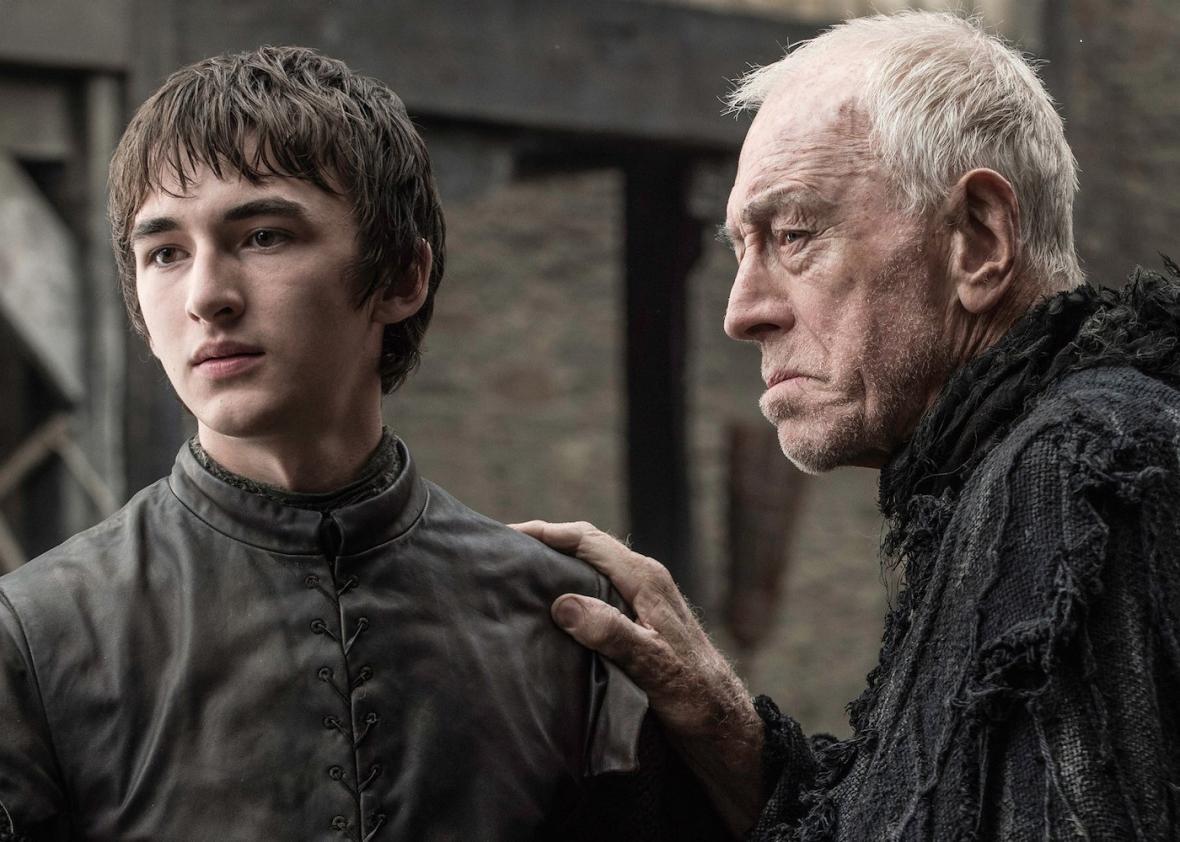After the May 1 episode of Game of Thrones, viewers watching on HBO Go were treated to a very special episode of Inside, the weekly session of sausage-making-secrets-sharing by show creators David Benioff and D.B. Weiss. The first topic was the return of Bran Stark (Isaac Hempstead Wright) and his warging mentor the three-eyed raven (Max von Sydow) and the depiction of the power that allows Bran to travel back to a time before he was born. In “Home,” Bran watches his father as a boy, sparring with his brother, Benjen, and bantering with his sister, Lyanna, and sees their relationship with a young stable boy known as Wylis, who Bran recognizes as his caretaker, Hodor.
Benioff began with an admission: “When we first started working on the show, we did not want to do flashbacks,” he said, “because oftentimes it seems like a hallmark of lazy storytelling.” Then came the justification: “That said, the history of this world is so important to understanding the world and to understanding why the characters are motivated as they are and to where they’re headed.” Benioff didn’t really finish the thought, but that didn’t stop a few wags from pointing out the convenience of the showrunner’s “we don’t use them … except when we do” policy.
Well, I thank the gods old and new that Benioff and Weiss swallowed their no-flashbacks pride. It would have been a massive mistake to eschew a storytelling technique that is perfectly suited to evoking Bran’s magical powers.
It’s not that flashbacks are always a good idea. Benioff and Weiss had used one before: The very first scene of Season 5 showed a teenage Cersei Lannister heading deep into the woods and forcing a witch to foretell her future, in which she learned that she would have three children and that all of them would die young. As with Bran’s analepsis, there was a temporal complication: We stepped back 20 or so years so that young Cersei could hear a prophecy about events that had partially but not fully unspooled by that point in the narrative. It was an atmospheric scene that showed Cersei had always been an entitled bully, made viewers worry for the safety of her surviving children, and set up a devastating season’s arc for the dowager queen. But it was a mistake. There was nothing in the divination that us muggles in TV land couldn’t have predicted without supernatural assistance, and it can’t have been news to anyone that Cersei was a teenage tyrant.
Bran’s flashbacks are much more interesting—and without them Bran’s truly breathtaking ability to enter the minds of creatures and trees and to experience life through their eyes and memories would seem tiresome rather than magical. If viewers only got to experience Bran’s journeys by seeing him lying in a knot of tree roots, all milky-eyed and still, we’d be as bored as his friend Meera Reed. It is infinitely more entertaining to see what warging looks and feels like.
Indeed, why bother to adapt a piece of writing into a series of moving images if you’re not going to show the people and places in the story? In George R.R. Martin’s novels, the history of Westeros and the lore of its great houses is passed along in shared recollections of past events, in reported speech, or in flashbacks. Only one of those takes full advantage of the medium of television. The analepses allow us to picture historical figures like Lyanna Stark in a way that staring at the statue carved into her tomb cannot. Flashbacks are especially useful in fictional worlds with no basis in real history—with a reality-based piece of art like Wolf Hall, readers or viewers can fill in gaps in the narrative by calling on their knowledge of Britain in the Tudor period. But he only things we know about Westeros are what Weiss and Benioff show us.
In the third episode of Season 6, we learned another reason Bran’s flashbacks are useful: They reveal inaccuracies in the historical record. In “Oathbreaker,” Bran and the three-eyed raven traveled back to the Tower of Joy and witnessed the legendary fight between Bran’s late father, Ned Stark, and Arthur Dayne. Ned’s victory against the Sword of the Morning was something Bran—and everyone else in the Stark orbit—had heard about for years; it was the foundation of Ned’s reputation as a brave and honorable man. Instead, Bran sees that Dayne was defeated only because Howland Reed stabbed him in the back—a detail the two survivors never shared for obvious reasons. The opportunity to see what Weiss described as “the discrepancy between perceived history … and what actually happened” doesn’t just expand viewers’ conception of Ned Stark, it reminds us to challenge the veracity of every story we haven’t seen for ourselves.
If there is a problem with Bran’s flashbacks it’s that they’re too compelling. Every time Bran complains about the three-eyed raved pulling him out of these glimpses of the past, he’s also speaking for the viewer. When life in Meereen and Braavos and Winterfell seems stalled and repetitious, who can blame Bran for wanting to return to the mysterious events at the Tower of Joy. I’d rather be there, too.
